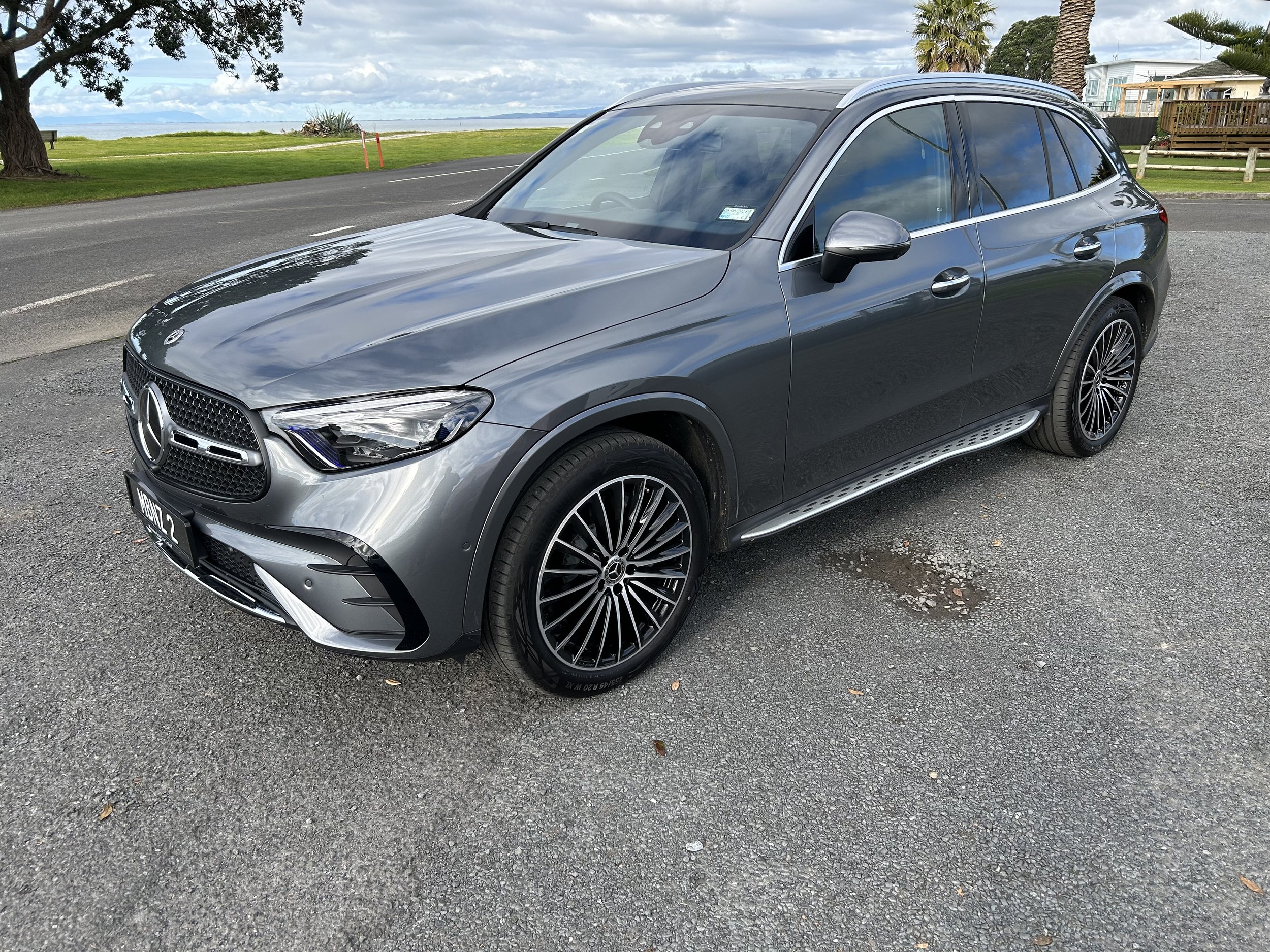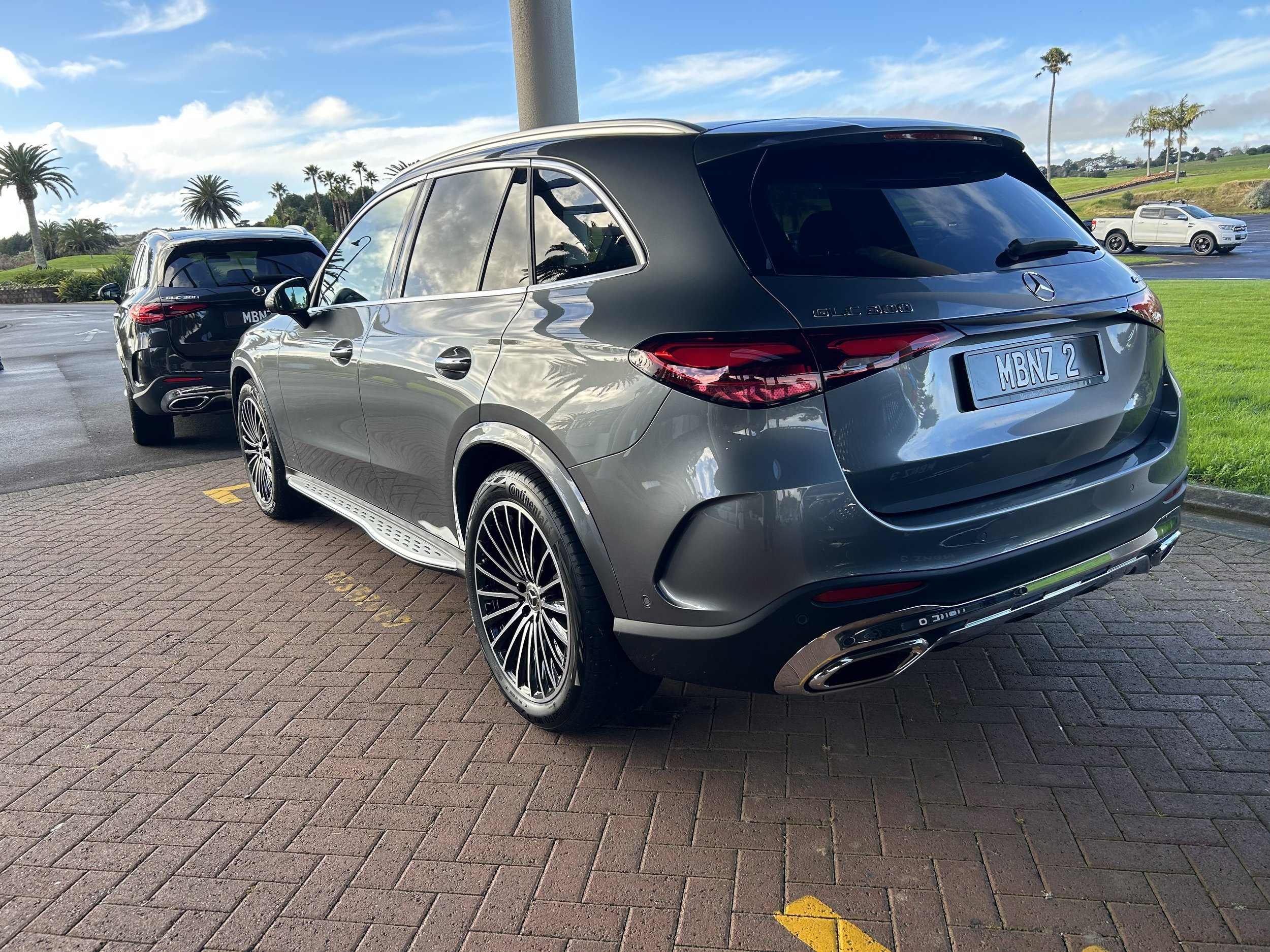EQC out, GLC avoids electric to accomodate new-era EQE wagon
/Strategy avoids unnecessary product complexity and boosts battery car drive, Mercedes Benz regional high-up proposes.
CLEARING the path for an incoming fully battery-compelled Mercedes sports utility wagon requires retiring the EQ family’s first-born and is why only mild electric assist features in the new version of Benz’s brightest sales star, the GLC.
The strategy driving impending entry of the EQE SUV (above), a wholly new product in the crossover sector, has been largely unwrapped by a senior brand spokesman.
Retiring the EQC, the 2020 New Zealand Car of the Year and the car that announced the EQ sub-brand in 2018, is one part.
That departure might seem premature as it is just in its fifth year of sale - commonly a mid-life point for new cars, except with EQC no facelift was planned. It will be gone by year-end.
The other element means the just-landed GLC medium-sized five-seater sports utility will steer clear of a highly-effective petrol-electric format it headlines with in Europe.
The plan is all about avoiding a potentially messy pricing gridlock and won’t leave Mercedes any the worse off, explains Jerry Stamoulis, head of media relations and product communications for the region.
The EQE SUV, which builds on the same platform as the recently launched EQE sedan, will fulfil EQC’s role with better result, as it has superior technology.
Unveiled internationally in February, the new wagon seems set to release here around September.
Benz has yet to share full details of how EQW SUV will come locally, but the international reveal, in February, suggests more power and more range than the EQC.
The new line brings in electric motor options ranging from a 215kW unit to a 300kW version with 858Nm of torque in the factory product.
With the equivalent EQE sedans, the outputs are 180kW/550Nm at base, 215kW/765Nm at mid-level and 460kW/950Nm in the top 53. EQE SUV in its AMG form is more intense, with 505kW, 1000Nm and promising 0-100kmh in 3.5 seconds.
In promising up to 590km on a single charge when measured by the WLTP standard, EQE SUV will also deliver a 170km optimal range advantage on the $142,900 EQC400 4Matic (below).
Having EQE SUV will take Mercedes’ local full electric selection for this year to eight vehicles, the count excluding the GLC-based EQC but including the sports utility wagon version of the lavishly-trimmed top-tier EQS, which in sedan form can be a $310k car.
Mercedes has yet to say if another EQC will come, but conceivably it would want to fill in the gap between the EQB and EQE soft-roaders.
Stamoulis says it is premature to say how closely the EQE SUV will match the three EQE sedans in specification and price.
“That’s not finalised. We’re still working on that. We are looking at all options.”
However, impression is the EQE SUV could well be close enough to the sedan - which starts in $132,100 rear-drive and also offers in $145k 350 and $195k 53, both with 4Matic all-wheel-drive - to leave EQC out of a job.
The same challenge is why the GLC with a PHEV drive that lends up to 100km pure electric is also being kept out.
The new model type will instead to pin back to AMG 43 and AMG 63s next year and, later this year, a Coupe to join the $113,900 GLC300 sports utility wagon (above), whose media event yesterday was the reason for Stamoulis’ flying visit from Melbourne.
The GLC300 has a 190kW/400Nm 2.0-litre petrol with 48 volt mild hybrid assist, married to a nine-speed automatic apportioning to all four wheels.
Stamoulis said he can understand why a GLC PHEV might have seemed attractive here. Kiwis are strongly drawn to the tech, BMW and Audi are among rivals offering it and the previous GLC had petrol-electric until its mid-life facelift.
Ultimately, everything came down to the pace and price of technology change.
“We know plug-in hybrids are important here in NZ … it was a very long discussion not to get PHEV, but the business case just didn’t stack up.
“Also, when you look at what we have here in full electric, and what is coming, we elected not to bring it (GLC PHEV) in.”
The new petrol-electric system will nonetheless show in the C-Class sedan, which shares a common underpinning with new GLC.
Research in NZ and in Australia suggested GLC300 is exactly to fan expectation.
“We have the luxury of having all the data from the previous GLC and we know which model and which specification customers are looking for.
“We have also learned from the C-Class; in which the C300 is the biggest seller. When we bring all that information together we know we can deliver one specific (GLC) model with all that we think customers are wanting.”
Mercedes sells common product in Australia and NZ and though our neighbour is clearly a much bigger market, Stamoulis assures it wasn’t a case of Kiwis having to put up.
“We look at both markets and we wouldn’t make a decision just based on Australia. We find a lot of customers are gravitating to a higher spec.”
While there is clear anticipation that EQE SUV will be a high-volume electric car, the view for GLC is that it taking a less key role from now on won’t keep it from performing solidly.
However, it won’t be the big player it was in supplanted first generation form, where it provisioned in four variants locally to hold top sales spot, a positioned it enjoyed overall for Benz, with more than 2.6 million global sales.
The GLC300 is relatively ‘option lite’ by Benz standards, with just $6900 asked for a ‘Plus’ package delivering some addition safety and comforts enhancements, with the only other cost extras being two paint finishes, each at $1500, and $1000 if they wanted the 20-inch wheels with a special black finish.
Mercedes has embargoed motoring media from reporting on how the GLC300 drives before June 29.





















